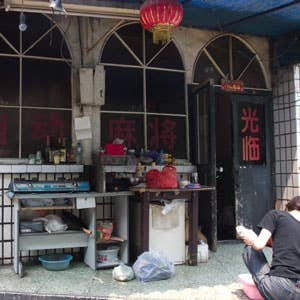
Neighborhoods Old And New
Despite their historical significance, approximately 80 percent of Beijing's hutong neighborhoods have been torn down over the past three decades to make way for high-rises. And those, like Dongcheng, that haven't been razed are changing dramatically, as the government and private homeowners demolish old structures and build new ones, often in an "ancient" style, that become boutiques, bars, and luxury homes, complete with modern, stainless-steel appliances, designed for foreigners and Beijing's growing upper-middle class. Throughout the hutongs, however, remnants of the city's past are still visible.
When most single-family courtyard homes became multifamily buildings in the 1950s, each family was given only one room to live in. To expand their spaces, residents built bedrooms and kitchens that extended into public lanes; these ad hoc structures have since become permanent parts of hutong homes.
Though gas officially replaced coal fuel in Beijing homes in the 1980s (when soaring pollution from coal fires forced the government to take action), most people living in hutongs still use pressed-coal "honeycombs" to heat their homes. These also keep a kettle or a pot of soup simmering all day long.
Because of the high cost of living in Beijing, a great number of hutong residents live in small apartments with enough space for only a bed, a table, and a television. In lieu of a full, indoor kitchen, many keep a propane stove just outside their front door, where they can stir-fry their meals quickly.
Keep Reading
Continue to Next Story










